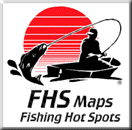 |
|
|
Click on the image to vote for this site. Want to join The Top 1000 Fishing Sites, click here! Want to view the list, click here!
|
Nightime Strategies for WalleyesThey're bigger, more plentiful and more active. It's not just Walleyes either, but Largemouth, Smallmouth, Flatheads, Channel Cats and Pike. You don't have to take my word for it, check with anyone who has both day and night expierience and they'll probably tell you the same thing. I'm pretty well convinced that the fish we fish for at night are a completely different population of fish than those that bite during the day. I've caught plenty of 10, 11 and 12 pound Walleyes during the day but nothing that approaches the 14lb 1 oz. fish I caught at night. If you've checked around you'd probably find that most of the state records were caught at night. The uninitiated tend to think of night fishing as somewhat cumbersome
and difficult. The reality of the situatioon is , that night fishing
can actually be simpler and more productive than daytime forrays.
The secret to being succesfull is proper planning. By havingthe rods
ready to go, having a handfull of cranbaits, rahter than huge tackle boxes
strewn around the boat and a marked The first thing that goes into a good game plan for night fishing Walleyes is defining the areas the offer the highest potential. Looking at your topo map , try to find the longest piece of structure, usually an underwater point, that extends from a shoreline area out to the deepest water in the lake. Understand that the point may look the biggest of the lake above water , but is the longest breakline underwater. The second type of area will be a weedline or gravel/rock area that drops off quickly to the deepest water of the system. Discount the area if the fish ahve to pass over a long flat to reach the area, it must transition quickly to the deep water with no impediments. I call these areas breakline pile up areas. This is because we can find fish piling up that are leaving shallow water for deep, and at the same time holding fish coming from the deep to shallow. As a back-up spot look to large islands or sunken humps. This a game of cat and mouse though, as fish that use these areas, come up and move of in short periods of time. You could hit every hump and miss the fish each time or hit fish every one. Expierience in the system will tell you that there are preferred humps that the fish use more seem to use more often and stay for longer times. Now the attack portion of our plan is two pronged. We need to
troll to find the fish, the we'll switch over to casting once we've located
a health pod of fish. The key to making the trip enjoyable is being
rigged and prepared before you leave the launch ramp. I always have
my Once arriving at my #1 spot, I can either troll with my While holding the rod steady and moving along, you should'nt be able to feel or just barely feel the bait slowly moving from side to side. Drop your arm back, pause and then sweep the bait forward, pause and then drop the rod back maintianing a tight line and repeat. This "dying minnow flutter", is what triggers the fish to bite. More times than not, the bite feels more like a perch nipping on the bait. By hand holding the rod, you can set the hook and then figure out that the little perch nip you just expieierinced is really a 10# hog about to give you the battle of your life. There is a kind of stride or rhythm that you will hit, noticing exactly how many wobbles your bait gets when you sweep it forward, that will put you in the groove to catching fish. Once I've hit a ffish on one pass over thea rea, I turn the boat around and run the breakline again. If I pop another , thats my indication that the area has a concentration of fish and then it's time to switch gears and go to casting mode and really get into them. Casting to these fish is done with the same bait selelction we just
trolled them with. I keep my eyes peeled on my That is without a doubt, a recipe for success for fishing your own body of water at night. The deal is'nt quite complet though. These fish are on the move and feeding. That means that we can't get on one spot and sit on it all night probably. The bite will tail off and die, and then we need to begin our process all over again. The fish may have moved farther down the structure, or left it completely. By trolling the area again, we can determine the answer. If the answer is that they left, be versatlie pull out the Fishing Hot Spots map again, move to the next spot and repeat the process. Most nights I can on fish in a number of different areas, and then even come back to the ones that have gone cvold and catch fish again, because a new group of fish will have moved in. I spent a lof time, and had a lot of fun, pioneering nightime walleye techniques, and believe me when I tell you this system works great. You'll also be suprised the number of other species of fish you catch, and at the size of those fish. I hope you get a chance to try this stuff out this month, because it looks to be a great night season this year. Good luck and I'll see you on the water. Captain Mark Martin Equipment used  2025 Pro V
2025 Pro V Maps
MapsPlease visit these site sponsors
Daiichi/Tru-Turn Hooks,
Lindy
Little Joe,
R-A.M Mounting Systems,
Ranger
boats,
Mercury Marine, Bedford
Sales and Hamby's Beaching Bumpers,
Goldeneye
Marine products, Panther
Marine Products
|
|---|---|